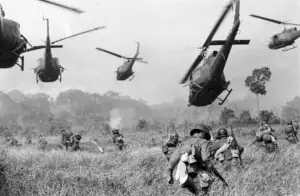The League of Nations, established in the aftermath of World War I, was a pioneering attempt at global governance. Its legacy, while marked by failure to prevent World War II, laid the foundation for modern international relations and institutions.

✅ AI Essay Writer ✅ AI Detector ✅ Plagchecker ✅ Paraphraser
✅ Summarizer ✅ Citation Generator
Founded in 1920, the League of Nations was the first international organization aimed at maintaining world peace and cooperation. Though it eventually failed to prevent World War II, its establishment was a significant moment in the history of international relations. This article explores the League’s establishment, its achievements and failures, and how its legacy influenced the creation of the United Nations and the shape of current global diplomacy.
The Establishment of the League of Nations
The League of Nations emerged from the devastation of World War I, primarily based on U.S. President Woodrow Wilson’s vision. It was formalized in the Treaty of Versailles in 1919, marking a new era in international politics focused on mutual cooperation and peaceful conflict resolution. The League’s structure consisted of a General Assembly, a permanent Secretariat, and an Executive Council, with its largest membership reaching 58 nation-states. However, notable absences, like the United States, significantly impacted its effectiveness.
| 🌍 Component | 📝 Description |
|---|---|
| General Assembly | Comprised of all member states, it was the League’s broadest decision-making body. |
| Permanent Secretariat | Handled administrative and procedural matters. |
| Executive Council | Included permanent members (Great Britain, France, Japan, and Italy) and non-permanent members, responsible for major decisions. |
The League’s primary mandate was to maintain international peace and sovereignty, discouraging the use of military force in conflicts. Despite some successes in conflict resolution, such as the peaceful settlements between Iraq and Turkey (1926) and Colombia and Peru (early 1930s), the League ultimately failed to prevent the outbreak of World War II, reflecting its limitations in global governance.
The League’s Achievements and Failures
Despite its ultimate failure to prevent a second global conflict, the League of Nations had several noteworthy achievements. It successfully mediated disputes and set a precedent for international cooperation. However, its weaknesses were glaring: a lack of enforcement mechanisms and the absence of major powers like the United States limited its effectiveness and reach.
| ✅ Achievement | ❌ Failure |
|---|---|
| Mediation of international disputes | Inability to prevent World War II |
| Setting a precedent for global cooperation | Lack of enforcement mechanisms |
| Promoting the concept of collective security | Non-participation of key global powers |
These contrasts highlight the complex legacy of the League. While it initiated important concepts in international relations, its structural and political weaknesses prevented it from fulfilling its ambitious goals.
The United States and the League of Nations
The United States played a pivotal role in the conceptualization of the League of Nations, with President Woodrow Wilson advocating for a new world order based on transparency, sovereignty, and non-aggression. However, domestic opposition, particularly from isolationist senators, prevented the U.S. from joining the League. This absence weakened the League’s global influence and demonstrated the complexities of international cooperation.
| 🇺🇸 U.S. Aspect | 📈 Impact on the League |
|---|---|
| Wilson’s Vision for Global Politics | Provided foundational principles for the League |
| Opposition in the U.S. Congress | Led to the U.S. not joining, weakening the League’s authority |
| Article X Controversy | Highlighted the challenges of collective security commitments |
Wilson’s vision and the subsequent American absence underscored the difficulties in balancing national sovereignty with international obligations, a challenge that continues to shape global politics.
Legacy and Transition to the United Nations
The League’s dissolution in 1946 paved the way for the United Nations, which sought to rectify the former’s shortcomings. The UN adopted similar principles but with stronger enforcement mechanisms, including peacekeeping forces, and a broader membership base.
| 🌐 Aspect | 🔄 Evolution from the League to the UN |
|---|---|
| Structural Design | Improved with stronger enforcement mechanisms |
| Membership | More inclusive, with major powers like the U.S. |
| Approach to Peacekeeping | Introduction of dedicated peacekeeping forces |
This transition marks the enduring legacy of the League of Nations: its ideals and failures significantly influenced the structure and functions of the United Nations, shaping modern international relations.
The League of Nations, despite its inability to avert World War II, was a monumental step in the evolution of global governance. Its legacy is not solely defined by its failures but also by its contributions to the development of international cooperation and conflict resolution. The League’s experiences informed the creation of the United Nations, underlining the importance of learning from history to build more effective and inclusive global institutions.
Follow us on Reddit for more insights and updates.





Comments (0)
Welcome to A*Help comments!
We’re all about debate and discussion at A*Help.
We value the diverse opinions of users, so you may find points of view that you don’t agree with. And that’s cool. However, there are certain things we’re not OK with: attempts to manipulate our data in any way, for example, or the posting of discriminative, offensive, hateful, or disparaging material.